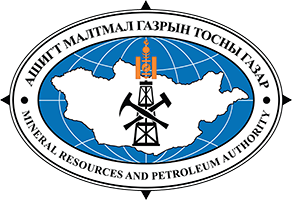Information about the crude oil market
Brent crude traded at $ 99.10-101.16 a barrel and WTI crude traded at $ 95.78-104.09 a barrel on the New York Mercantile Exchange last week.
Oil was up on Monday morning in Asia. Investors are concerned China’s rising COVID cases could lead to the resumption of rubs and further dent fuel demand. Brent oil futures rose 0.64% to $101.81 by 12:23 AM ET (0423 AM GMT) and crude oil WTI futures jumped 0.39% to $94.94. China, the world’s second-largest oil consumer, reported 691 news COVID cases on Saturday, up from 547 the previous day.
Oil Up as China’s Rising COVID Cases Renew Demand Concerns By Investing.com
"While there have been no immediate pledges for increased oil production, the U.S. has reportedly indicated an expected gradual increase in supply," Baden Moore, head of commodities research at the National Australian Bank, said in a note. Separately, U.S. Treasury Secretary Janet Yellen said on Saturday she had productive meetings about a proposed price cap on Russian oil with a host of countries on the sidelines of a meeting of the finance chiefs of the Group of 20 major economies.
Yellen raised the price cap idea during a virtual meeting on July 5 with Chinese Vice Premier Liu He, China's commerce ministry said last week. The ministry had said setting a cap on the Russian oil price is a "very complicated issue" and the precondition to solving the Ukraine crisis is to promote peace talk solving relevant parties.
Oil prices extend gains as weaker dollar, tight supplies support By Reuters (investing.com)
Oil overturned an early drop to edge higher after US President Joe Biden wrapped up a landmark visit to the Middle East without a firm commitment from key producer Saudi Arabia to boost crude supplies.
West Texas Intermediate traded above $98 a barrel after dropping almost 7% last week as investors fretted that a global slowdown may hurt demand and the dollar hit a record. While US energy envoy Amos Hochstein said he is confident Persian Gulf producers will raise output after Biden visits Saudi Arabia, local ministers insisted that policy decisions would be taken according to market logic and within the OPEC+ coalition, a grouping that includes Russia.
Crude has slumped since mid-June as concerns about a potential recession ripped through commodity markets, eroding the gains that followed Russia’s invasion of Ukraine. While the drop has been a boost for the US administration, Biden remains eager to get the Organization of Petroleum Exporting Countries to add supplies to bring prices down further and help quell inflation. OPEC and its allies including Russia next meet on Aug. 3 after members agreed to revive the crude supplies that were halted during the coronavirus pandemic.
“The OPEC+ quota system ends in September, and attention is turning to what will happen next,” said Stephen Innes, managing partner at SPI Asset Management. “I would not be surprised to see something packaged at the end of OPEC September agreement, or even sooner, that may allow those with spare capacity to up their quota a touch, and Biden could declare a win.”
Their latest forecast, which extends the outlook to the end of next year, shows global oil demand rising strongly again in 2023, despite growing fears over inflation and warnings of an impending recession. A lack of investment in new crude production capacity elsewhere means that the OPEC group will need to pump more to meet that extra demand.
OPEC’s outlook for demand is more robust than that of analysts at the International Energy Agency or the US Energy Information Administration, both of which also updated their outlooks last week.
The growth that OPEC foresees will take global oil demand to 103 million barrels a day on average in 2023, well above its pre-pandemic level. Combine the demand and supply outlooks, and it looks like the 13 members of OPEC will need to deliver more than 30 million barrels a day on average in 2023, according to both OPEC and the IEA.
"Brent crude will find support at the end of the week if Russia does not turn the gas back on to Germany after Nord Stream 1 maintenance," said OANDA senior analyst Jeffrey Halley.
2022-07-18
